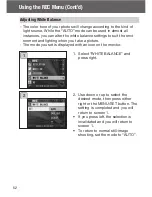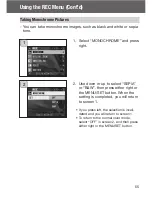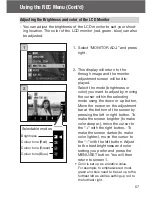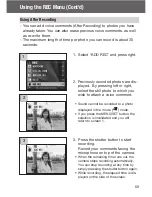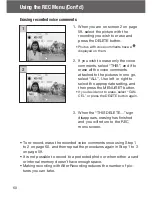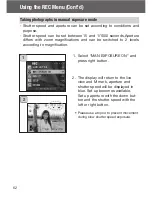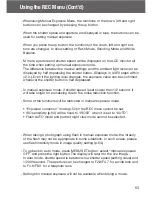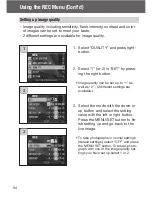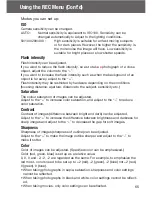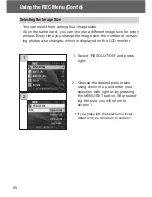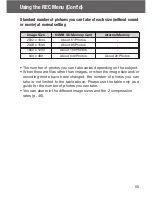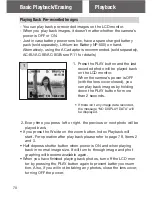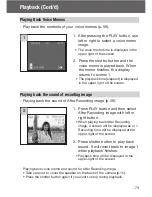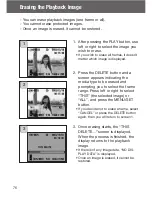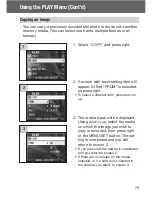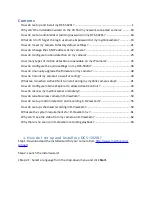
Using the REC Menu (Cont’d)
Modes you can set up:
ISO
Camera sensitivity can be changed.
AUTO ;
Normal sensitivity is equivalent to ISO100. Sensitivity can be
changed automatically to adjust to the lighting conditions..
50/100/200/400 ;
High sensitivity is suitable for an fast moving subjects
or for dark places. However, the higher the sensitivity is,
the more noise the image will have. Low sensitivity is
suitable for bright places or slow shutter speeds.
Flash intensity
Flash intensity can be adjusted.
If you want to reduce the flash intensity, so as to take
a
photograph of a close
object, adjust the volume to the “–”.
If you want to increase the flash intensity, such as when the background of an
object is far away, adjust to the “+”.
Flash intensity may be restricted by hardware depending on the conditions
(focusing distance, aperture, distance to the subject, sensitivity etc.)
Saturation
The colour saturation of images can be adjusted.
Adjust to the “+” to increase color saturation, and adjust to the “–” to reduce
color saturation.
Contrast
Contrast of images (difference between bright and dark) can be adjusted.
Adjust to the “+” to increase the difference between brightness and darkness for
sharp images and adjust to the “–” to decrease the gap for soft images.
Sharpness
Sharpness of images (sharpness of outline) can be adjusted.
Adjust to the “+” to make the image outline sharper and adjust to the “–” to
make it softer.
Color
Color of images can be adjusted. (Specified color can be emphasized.)
Color (red, green, blue) is set up as a relative value.
0, 0, 0 and -2, -2, -2 are regarded as the same. For example, to emphasize the
red most, colors need to be set up to +2 (red), -2 (green), -2 (blue) not +2 (red),
0 (green), 0 (blue).
• When taking photographs in sepia, saturation, sharpness and color settings
cannot be reflected.
• When taking photographs in black and white, color settings cannot be reflect-
ed.
• When taking movies, only color settings can be reflected.
65


